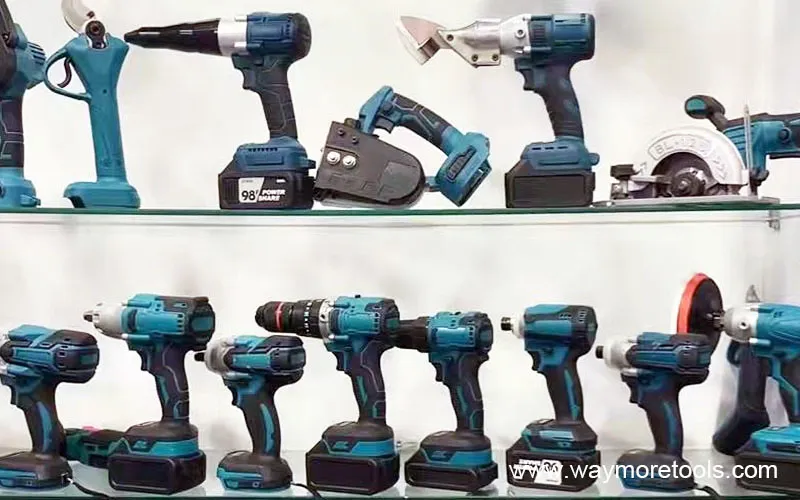
Table of Contents
- Introduction
- Fluctuating Power Output: Impact on Drilling Efficiency
- Inconsistent Power Delivery: Causes and Consequences
- Power Surges and Drops: Effects on Drilling Equipment
- Optimizing Power Delivery for Smooth Drilling Operations
- Troubleshooting Inconsistent Power Delivery in Drilling
- Advanced Technologies for Stable Power Supply in Drilling
- Case Studies: Overcoming Inconsistent Power Delivery in Drilling
- Conclusion
Inconsistent Power Delivery: Uneven Drilling, Unreliable Results
Introduction
Inconsistent Power Delivery: Fluctuations in power output leading to uneven drillingInconsistent power delivery during drilling operations can lead to uneven drilling, which can have a number of negative consequences. These consequences can include:
* Reduced drilling efficiency
* Increased drilling time
* Damage to the drill bit
* Damage to the workpiece
In order to avoid these problems, it is important to ensure that the power supply to the drill is consistent. This can be done by using a power supply that is specifically designed for drilling operations, or by using a voltage regulator to stabilize the power supply.
Fluctuating Power Output: Impact on Drilling Efficiency
Inconsistent Power Delivery: Fluctuations in Power Output Leading to Uneven DrillingFluctuations in power output during drilling operations can have a significant impact on drilling efficiency. Uneven power delivery can lead to a variety of problems, including:
* Reduced drilling speed
* Increased bit wear
* Poor hole quality
* Increased energy consumption
The causes of inconsistent power delivery can be varied. Some of the most common causes include:
* Fluctuations in the electrical grid
* Mechanical problems with the drilling equipment
* Operator error
Fluctuations in the electrical grid can be caused by a variety of factors, including:
* Changes in demand for electricity
* Outages or brownouts
* Power surges
Mechanical problems with the drilling equipment can also lead to inconsistent power delivery. These problems can include:
* Worn or damaged belts
* Faulty electrical connections
* Malfunctioning motors
Operator error can also be a cause of inconsistent power delivery. For example, if the operator does not properly adjust the drilling speed or feed rate, this can lead to fluctuations in power output.
The effects of inconsistent power delivery can be significant. Reduced drilling speed can lead to increased drilling time and costs. Increased bit wear can lead to premature bit failure and increased downtime. Poor hole quality can lead to problems with casing and cementing. Increased energy consumption can lead to higher operating costs.
There are a number of steps that can be taken to mitigate the effects of inconsistent power delivery. These steps include:
* Using a voltage regulator to stabilize the electrical grid
* Regularly inspecting and maintaining the drilling equipment
* Training operators on proper drilling techniques
By taking these steps, it is possible to minimize the effects of inconsistent power delivery and improve drilling efficiency.
Inconsistent Power Delivery: Causes and Consequences
Inconsistent Power Delivery: Fluctuations in power output leading to uneven drillingIn the realm of drilling operations, consistent power delivery is paramount for achieving optimal performance and ensuring the integrity of the drilling process. However, fluctuations in power output can lead to uneven drilling, compromising the quality of the borehole and potentially causing costly delays.
One of the primary causes of inconsistent power delivery is voltage fluctuations. These fluctuations can arise from various sources, such as unstable power grids, faulty generators, or inadequate wiring. When voltage levels drop below the required threshold, the drilling equipment may experience a loss of power, resulting in uneven drilling. Conversely, excessive voltage can damage the equipment, leading to costly repairs and downtime.
Another factor contributing to inconsistent power delivery is frequency variations. The frequency of the power supply should match the specifications of the drilling equipment. Deviations from the optimal frequency can cause the equipment to operate inefficiently, leading to uneven drilling. For instance, if the frequency is too low, the drilling speed may be reduced, while excessive frequency can result in overheating and premature wear of the drilling components.
The consequences of inconsistent power delivery can be far-reaching. Uneven drilling can compromise the integrity of the borehole, making it susceptible to collapse or deviation from the intended path. This can lead to increased drilling time, higher costs, and potential safety hazards. Additionally, inconsistent power delivery can damage the drilling equipment, resulting in costly repairs and downtime.
To mitigate the risks associated with inconsistent power delivery, it is crucial to implement measures that ensure a stable and reliable power supply. This includes using voltage regulators to stabilize voltage levels, employing frequency converters to maintain the optimal frequency, and conducting regular maintenance and inspections of the power supply system.
Furthermore, it is essential to select drilling equipment that is designed to withstand voltage and frequency fluctuations. This may involve investing in equipment with built-in surge protectors or variable frequency drives. By taking these precautions, drilling operations can minimize the impact of inconsistent power delivery and ensure the smooth and efficient execution of drilling projects.
In conclusion, inconsistent power delivery is a significant challenge that can lead to uneven drilling and compromise the integrity of drilling operations. By understanding the causes and consequences of inconsistent power delivery, and implementing measures to ensure a stable and reliable power supply, drilling companies can mitigate these risks and achieve optimal drilling performance.
Power Surges and Drops: Effects on Drilling Equipment
Inconsistent Power Delivery: Fluctuations in Power Output Leading to Uneven DrillingPower surges and drops are common occurrences in electrical systems, and they can have a significant impact on drilling equipment. When power output fluctuates, it can cause the drill to speed up and slow down erratically, resulting in uneven drilling. This can lead to a number of problems, including:
* Reduced drilling efficiency
* Increased wear and tear on the drill bit
* Damage to the drill motor
* Safety hazards
In addition to these problems, inconsistent power delivery can also lead to premature failure of the drill. When the drill is subjected to repeated power surges and drops, it can cause the electrical components to overheat and fail. This can be a costly problem, as it can require the replacement of the entire drill.
There are a number of things that can cause power surges and drops, including:
* Faulty wiring
* Overloaded circuits
* Power outages
* Brownouts
If you are experiencing inconsistent power delivery, it is important to have the electrical system inspected by a qualified electrician. The electrician can identify the cause of the problem and make the necessary repairs.
In the meantime, there are a few things you can do to minimize the impact of power surges and drops on your drilling equipment:
* Use a surge protector. A surge protector can help to protect your drill from damage caused by power surges.
* Avoid drilling during peak hours. Peak hours are the times when the electrical system is most likely to be overloaded, which can lead to power surges and drops.
* If you must drill during peak hours, use a drill that is designed to handle power fluctuations.
By following these tips, you can help to protect your drilling equipment from the damaging effects of inconsistent power delivery.
Optimizing Power Delivery for Smooth Drilling Operations
Inconsistent power delivery during drilling operations can lead to significant challenges, resulting in uneven drilling and reduced efficiency. Fluctuations in power output can cause variations in drilling speed, torque, and feed rate, leading to inconsistent hole quality and increased wear on drilling tools.To ensure smooth drilling operations, it is crucial to optimize power delivery and minimize fluctuations. This can be achieved through several measures, including:
* **Proper Equipment Selection:** Choosing drilling equipment with adequate power capacity and stability is essential. The equipment should be capable of handling the required drilling parameters and maintaining consistent power output under varying load conditions.
* **Stable Power Source:** Ensuring a stable power source is vital. Fluctuations in voltage or frequency can affect the power output of drilling equipment, leading to inconsistent drilling performance. Utilizing voltage regulators or uninterruptible power supplies (UPS) can help stabilize the power supply.
* **Proper Wiring and Connections:** Loose or faulty wiring and connections can cause power loss or fluctuations. Inspecting and maintaining electrical connections regularly is crucial to ensure optimal power delivery.
* **Load Balancing:** When multiple drilling machines are operating simultaneously, load balancing is essential. Distributing the load evenly across the power source helps prevent overloading and ensures consistent power delivery to each machine.
* **Monitoring and Control:** Implementing monitoring systems to track power output and drilling parameters allows for early detection of fluctuations. This enables timely adjustments to drilling parameters or power supply to maintain consistency.
By implementing these measures, drilling operations can achieve optimal power delivery, resulting in smoother drilling, improved hole quality, and increased efficiency. Consistent power output ensures that drilling tools operate at their optimal performance, reducing wear and tear and extending their lifespan.
Furthermore, optimizing power delivery contributes to overall safety by preventing sudden power outages or fluctuations that could lead to accidents or equipment damage. By ensuring a stable and reliable power supply, drilling operations can be conducted safely and efficiently, maximizing productivity and minimizing downtime.
Troubleshooting Inconsistent Power Delivery in Drilling
Inconsistent power delivery during drilling operations can lead to uneven drilling, affecting the overall efficiency and quality of the process. This issue arises when the power output from the drilling equipment fluctuates, resulting in variations in the drilling speed and torque.Several factors can contribute to inconsistent power delivery. One common cause is electrical issues, such as loose connections or faulty wiring. These problems can lead to voltage drops or surges, which can disrupt the power supply to the drilling equipment. Additionally, mechanical issues, such as worn or damaged components, can also cause power fluctuations.
The consequences of inconsistent power delivery can be significant. Uneven drilling can lead to poor hole quality, increased drilling time, and premature tool wear. In severe cases, it can even cause equipment damage or safety hazards. Therefore, it is crucial to identify and address the root cause of inconsistent power delivery promptly.
To troubleshoot inconsistent power delivery, it is essential to conduct a thorough inspection of the drilling equipment. This includes checking all electrical connections, wiring, and components for any signs of damage or wear. If any issues are identified, they should be repaired or replaced immediately.
In addition to electrical and mechanical inspections, it is also important to consider the power source itself. Fluctuations in the power supply can also contribute to inconsistent power delivery. If possible, it is advisable to use a stable and reliable power source to minimize the risk of power fluctuations.
Once the root cause of the inconsistent power delivery has been identified and addressed, it is essential to implement measures to prevent the issue from recurring. This may involve regular maintenance and inspections of the drilling equipment, as well as ensuring that the power source is reliable and stable.
By addressing inconsistent power delivery promptly and effectively, drilling operations can be optimized for efficiency, quality, and safety. Regular maintenance, thorough inspections, and a reliable power source are key factors in ensuring consistent power delivery and achieving optimal drilling performance.
Advanced Technologies for Stable Power Supply in Drilling
Inconsistent Power Delivery: Fluctuations in Power Output Leading to Uneven DrillingIn the realm of drilling operations, a stable and consistent power supply is paramount for ensuring efficient and precise drilling. However, fluctuations in power output can lead to uneven drilling, compromising the integrity of the borehole and potentially resulting in costly delays.
Power fluctuations can arise from various sources, including voltage drops, frequency variations, and harmonics. These fluctuations can disrupt the operation of drilling equipment, causing erratic rotation speeds and inconsistent torque. As a result, the drill bit may encounter varying resistance, leading to uneven penetration rates and an irregular borehole.
Uneven drilling can have several detrimental consequences. It can increase the risk of drill bit damage, as the bit is subjected to excessive stress and vibration. Additionally, it can reduce the accuracy of the drilling process, making it difficult to achieve the desired depth and trajectory. Furthermore, uneven drilling can lead to increased wear and tear on the drilling equipment, shortening its lifespan and increasing maintenance costs.
To mitigate the effects of inconsistent power delivery, advanced technologies have been developed to stabilize power supply in drilling operations. These technologies include:
* **Variable Frequency Drives (VFDs):** VFDs regulate the frequency of the power supply, allowing for precise control of the drilling equipment's speed and torque. By maintaining a constant frequency, VFDs minimize power fluctuations and ensure smooth drilling operations.
* **Uninterruptible Power Supplies (UPSs):** UPSs provide backup power in the event of a power outage or voltage drop. They store energy in batteries and release it when needed, ensuring that the drilling equipment continues to operate without interruption.
* **Power Conditioners:** Power conditioners filter out harmonics and other electrical disturbances that can disrupt the operation of drilling equipment. They improve the quality of the power supply, reducing the risk of power fluctuations and ensuring consistent drilling performance.
By implementing these advanced technologies, drilling operations can significantly reduce the impact of inconsistent power delivery. Stable power supply leads to smoother drilling, increased accuracy, reduced equipment wear, and improved overall efficiency. As a result, drilling companies can optimize their operations, minimize downtime, and enhance the quality of their drilling projects.
Case Studies: Overcoming Inconsistent Power Delivery in Drilling
Inconsistent Power Delivery: Fluctuations in Power Output Leading to Uneven DrillingIn the realm of drilling operations, consistent power delivery is paramount to achieving optimal performance and ensuring the integrity of the borehole. However, fluctuations in power output can disrupt the drilling process, leading to uneven drilling and compromising the quality of the well.
One of the primary causes of inconsistent power delivery is voltage fluctuations. These fluctuations can arise from various sources, such as unstable power grids, inadequate electrical infrastructure, or faulty equipment. When voltage levels drop below the required threshold, the drilling equipment may experience a loss of power, resulting in interruptions to the drilling process. Conversely, voltage spikes can overload the equipment, causing damage and further disruptions.
Another factor contributing to inconsistent power delivery is frequency variations. The frequency of the power supply should remain constant to ensure the smooth operation of drilling equipment. However, fluctuations in frequency can cause motors to run at incorrect speeds, leading to uneven drilling and potential damage to the drill bit.
The consequences of inconsistent power delivery can be significant. Uneven drilling can result in poor hole quality, increased drilling time, and higher operating costs. In severe cases, it can lead to equipment failure and costly downtime. Therefore, it is crucial to address the issue of inconsistent power delivery to ensure efficient and reliable drilling operations.
To overcome the challenges posed by inconsistent power delivery, several strategies can be employed. One effective solution is the use of voltage regulators. These devices stabilize voltage levels, ensuring a consistent power supply to the drilling equipment. Additionally, frequency converters can be utilized to regulate the frequency of the power supply, preventing fluctuations that could disrupt the drilling process.
Another approach to mitigating inconsistent power delivery is the implementation of uninterruptible power supplies (UPS). UPS systems provide backup power in the event of a power outage, ensuring that drilling operations can continue uninterrupted. This is particularly important in remote areas where power outages are more frequent.
Furthermore, regular maintenance and inspection of electrical equipment are essential to prevent power delivery issues. By proactively identifying and addressing potential problems, such as loose connections or faulty components, the risk of inconsistent power delivery can be minimized.
In conclusion, inconsistent power delivery is a significant challenge that can hinder drilling operations and compromise the quality of the borehole. By understanding the causes and consequences of this issue, and by implementing appropriate mitigation strategies, drilling companies can ensure a consistent and reliable power supply, leading to improved drilling performance and reduced operating costs.
Conclusion
**Conclusion:**Inconsistent power delivery during drilling operations can result in significant fluctuations in power output, leading to uneven drilling and reduced drilling efficiency. This can cause premature tool wear, increased drilling time, and potential safety hazards. To mitigate these issues, it is crucial to ensure a stable and consistent power supply throughout the drilling process. This can be achieved through proper equipment maintenance, optimized drilling parameters, and the use of appropriate power conditioning devices.
 Waymore Tools
Waymore Tools
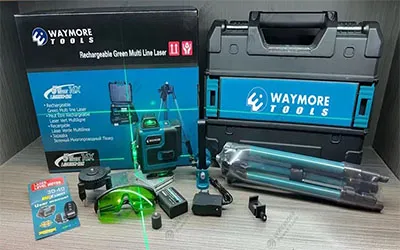
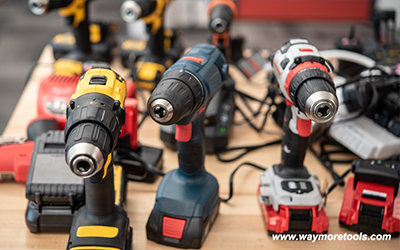

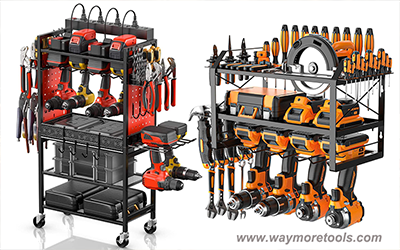
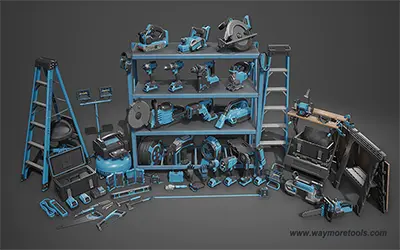



































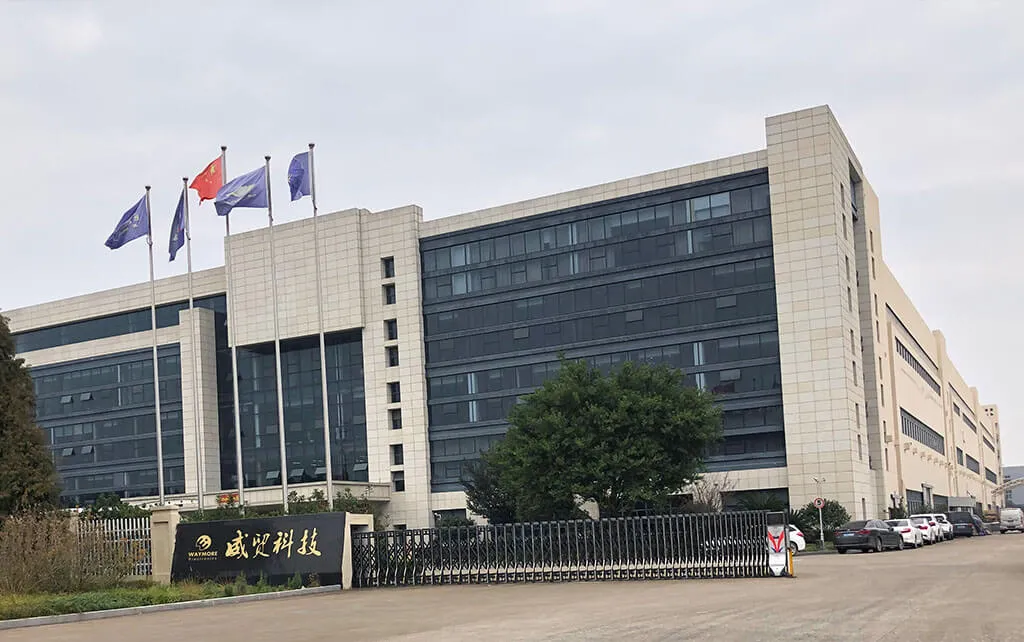











































































































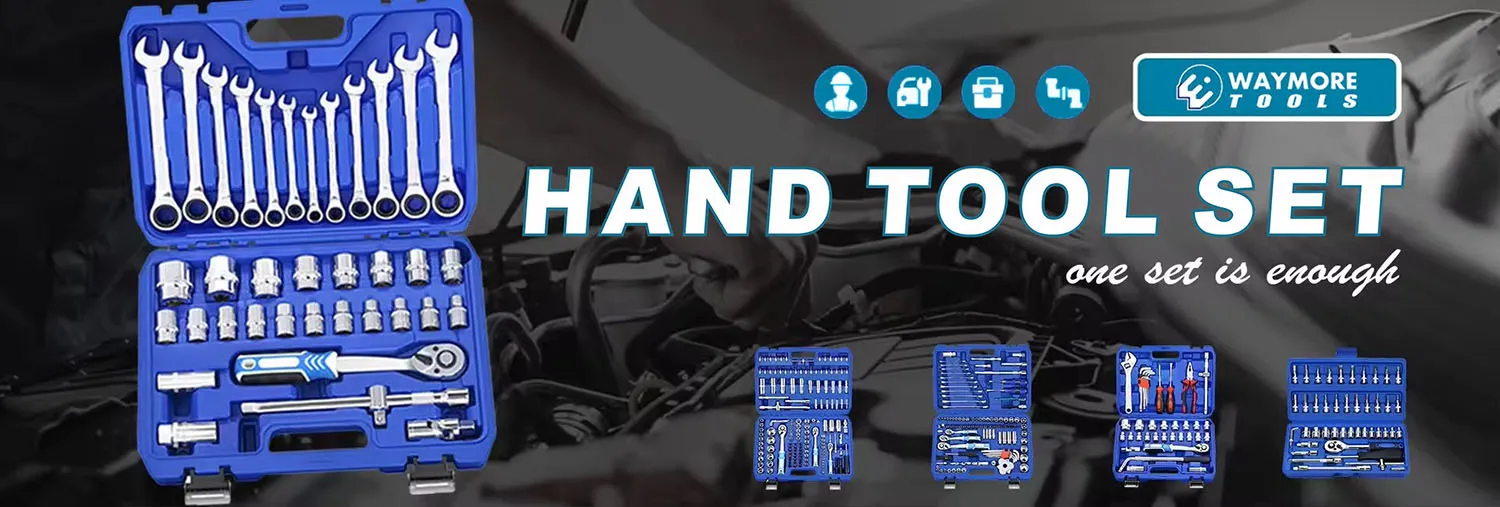























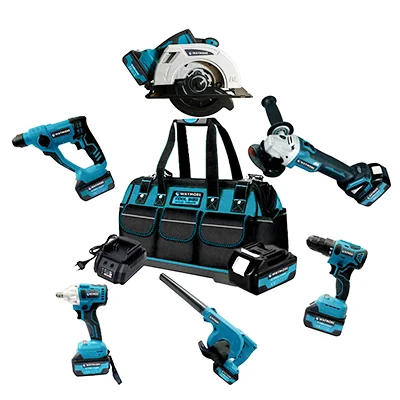


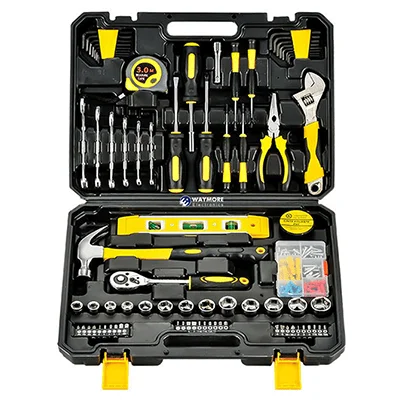

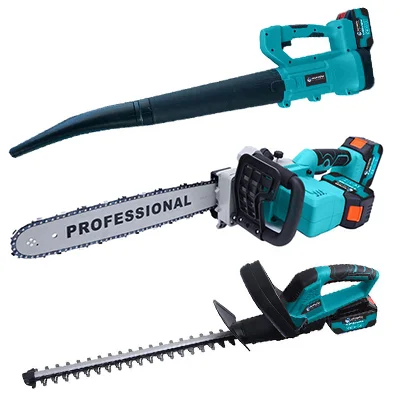

Leave a Comment